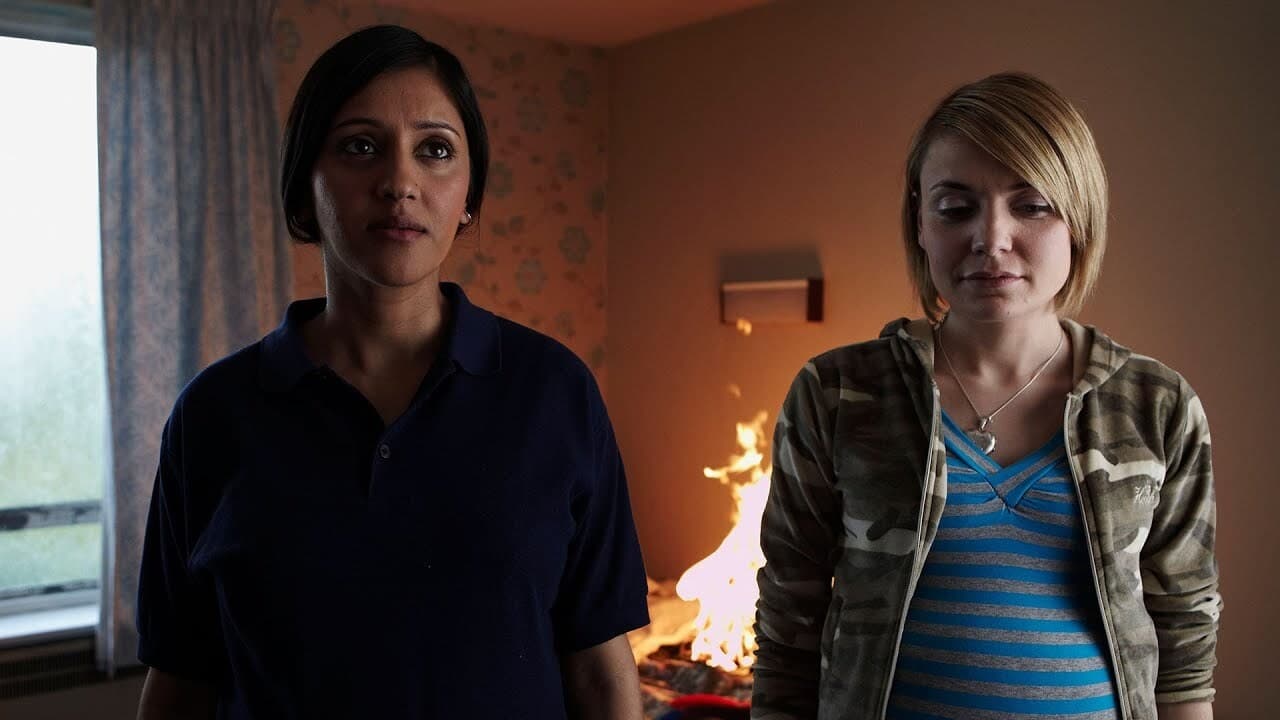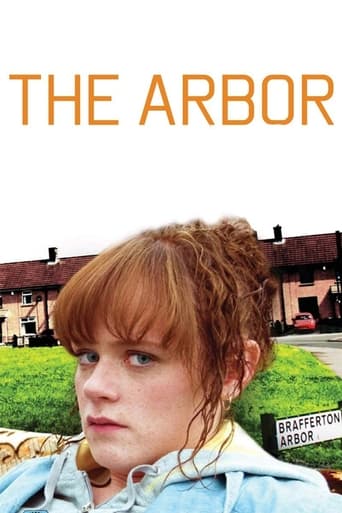

Contains mild spoilersThe Arbor tells the story of the late playwright Andrea Dunbar and her story up until her early death at 29. The film plays in a documentary format with recreations of her play The Arbor in between and it is in here that we really get a sense of just how autobiographical the play is. It is made well enough that we do not think it is interchanging quickly between these scenes that were difficult to watch further into the film given the continued context being made. Even halfway into the film I felt connected with it and didn't feel too rushed given the quite short run time. The rest of the film revolved around interviews with the people in her life, revolving round her family and portions of people on the estate. Even though actors were used on film they are actually lip syncing actual words spoken, a clever technique as it allowed them to open up more and made those words powerful. However it should not be expected that the film is all about Dunbar and does shift focus onto her children especially her daughter Lorraine who went through a traumatic time as a mixed race person growing up in a racially intolerant estate. Her story becomes just as relevant as Andrea's the more you hear about it. I was actually at a Q&A session with director Clio Barnard and this was highly intentional. The film was shot cleverly without being in a conventional documentary format with characters talking directly to camera. Real eye contact is made with the audience in this respect resonating even though it is played by actors. In summary though this film is a difficult watch and I've only really scratched the surface in terms of what the film portrays. Really do check it out as it is a really moving story that stays in the mind greatly afterwards.
... View More'The Arbor' of the title refers to a street called the 'Brafferton Arbor' on the Buttershaw estate in the city of Bradford, West Yorkshire, England. The people who lived there back in the 1980's were not rich, but one of them, Andrea Dunbar, became well known as a playwright. A lot of her work was biographical and this film tells us about her and about her oldest daughter, Lorraine, both through her work and by the use of actors lip-syncing to the voices of her friends and family.It is no secret that Andrea Dunbar died quite young, but she did have two plays open in London and one of them was made into a film in 1987. This was, of course, Rita, Sue and Bob Too!. If you haven't seen it and you're interested in this documentary, it's one I can recommend. But back to 'The Arbor', it is a very touching film at times, it can be quite dark too, but over all the people speaking are very realistic about life, the universe and everything. I found it quite compelling viewing, partly because I work in the city of Bradford and it's quite sad to think these things are still going on today (particularly around the area where I work). I guess if you're up for a gritty realistic tale of northern folk then I can highly recommend it.Just as a footnote, there's a piece of archive footage of Andrea getting on a train near the end of the film. She is getting the train at my local railway station A small claim to fame for the town I frequent.My Score: 7.7/10
... View MoreClio Barnard's biographical documentary gives a multifaceted portrayal of British dramatist Andrea Dunbar and her family.Andrea Dunbar grew up with seven siblings in suburban housing estate Bafferton Arbor in Bradford, England. At the age of 15 in the early 1960s she began writing her first play "The Arbor" which described the experiences of a pregnant teenager who was abused by her drunken father. Her first play had it's premiere at The Royal Court Theater in London 1980.Through interviews with family members, neighbours and colleagues, this genre varied documentary/theater setup/feature film depicts the short though momentous lifetime of playwright and mother of three Andrea Dunbar (1961-1990), centring on the strained relationship between her and her daughter Lorraine. "The Arbor" is eminently directed by English filmmaker Clio Barnard who with characterizing close ups and subtle camera movements creates sharp and prominent portraits of men and women. The color harmonic cinematography from Ole Bratt Birkeland interacts and forms strong contrasts to the overt stories and the unwitting mood which is partially relieved by the theatrical and vibrant scenes which recreates parts of the playwright's debut performance "The Arbor" from 1977. Even though the acting is vivid and expressive in the earlier mentioned scenes, the film is most convincing in the interview scenes where lip-sync was used by professional actors. The pace varies in accordance with the takes shifting length and the versatile narrative makes this gripping character portrait an archetypal full-length documentary debut where faith plays a central part.
... View MoreIf you've seen Alan Clarke's wonderful 'Rita, Sue and Bob Too!' (UK 1986), you'll have some idea of what to expect from 'The Arbor'. "The Arbor" is a small part of the Buttershaw Estate in South Bradford where Clarke's film was set. Clarke's film was adapted from her own play by Andrea Dunbar, a 20 year-old single mother in 1982 when the play first appeared. She had written her first play also called 'The Arbour' when she was still at school and a third, 'Shirley', in 1986 before she died suddenly from a brain haemorrhage aged just 29.Knowledge of 'Rita, Sue and Bob Too!' will only help a little, however. This film, 'The Arbour', is part inspired by but is not an adaptation of Dunbar's play. Instead it is a form of documentary about Dunbar and her personal legacy that turns out to be mainly about the equally difficult life of her first child, Lorraine.The film is written and directed by Clio Barnard who has Bradford connections. She visited the Buttershaw estate in 2009 and interviewed members of the extended Dunbar family and some other residents. She then borrowed the idea of hiring actors to lip-synch the recorded interviews (in A State Affair, a play by Robin Soans about the Buttershaw estate, actors spoke the words of the people Dunbar knew). Scenes with the actors were shot on the estate and in a London studio. They were edited together with two other kinds of material – scenes from 'Rita, Sue . . .' and from arts and news programmes about Andrea Dunbar plus scenes from 'The Arbor' play, acted out on the 'green' on the estate.So, what does it all mean? I'm honestly not sure. Technically it is very well put together. I found myself moved by several scenes. At other times I felt like I didn't want to watch. I think that my personal preference is for a social-realist drama, but I recognise that the approach here is very powerful. My only real problem was in the casting of George Costigan as one of the actors reading the words of one of the fathers of Andrea Dunbar's children. Costigan was 'Bob' in Rita, Sue . . . and I found this an intertextual step too far.Clio Barnard has, I think, previously produced video installations and sometimes I felt that I was viewing an installation. I found the initial stages confusing as they moved backwards and forwards in time, but eventually the film developed a distinctive narrative line focusing on Lorraine and this made it more like a traditional documentary film.The Arbor appears to be attracting audiences to the National Media Museum's cinemas. Bradford audiences will probably have a rather different take on the film than the London critics who celebrated its success in winning two prizes at the London Film Festival this week.
... View More